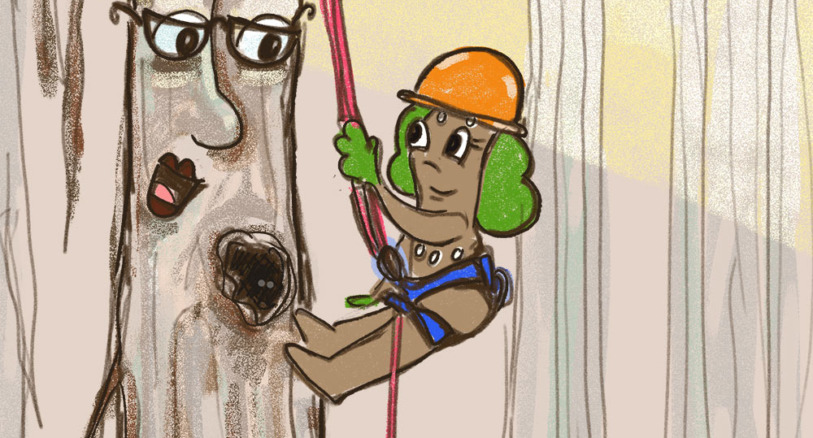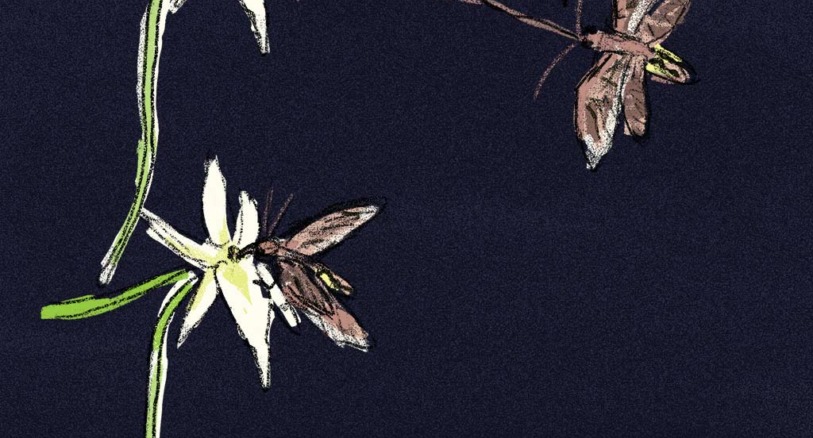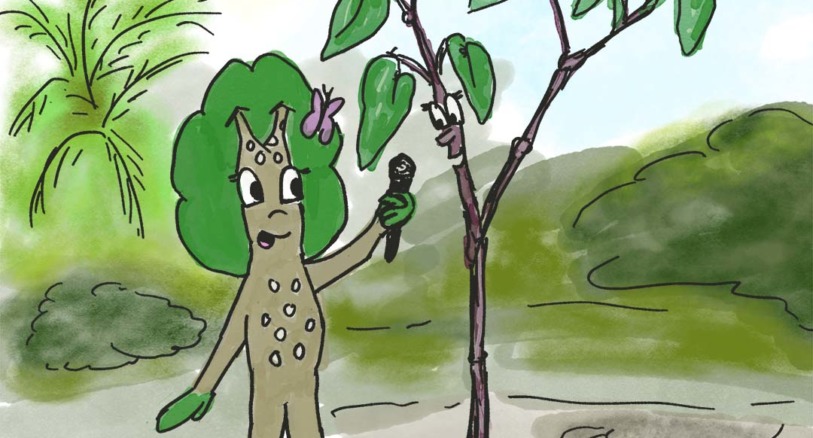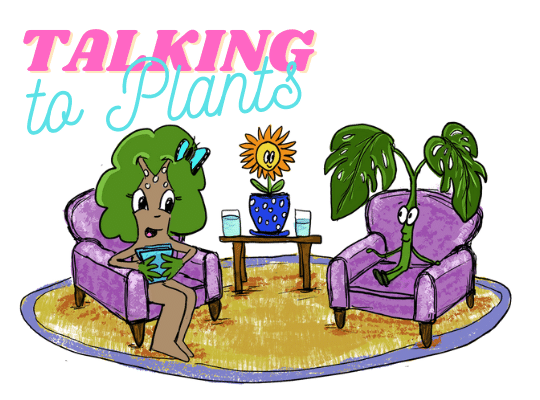
Today’s guest: Araucaria angustifolia, commonly known as an araucaria tree, Paraná pine, or candelabra tree
Sofia Ceiba: Howdy! Today we are coming to you from a high elevation area in the Atlantic Forest of southern Brazil. My guest is Cari Araucaria, an araucaria tree. Hi, Cari!
Cari Araucaria: Thanks for having me on the show, Sofia.
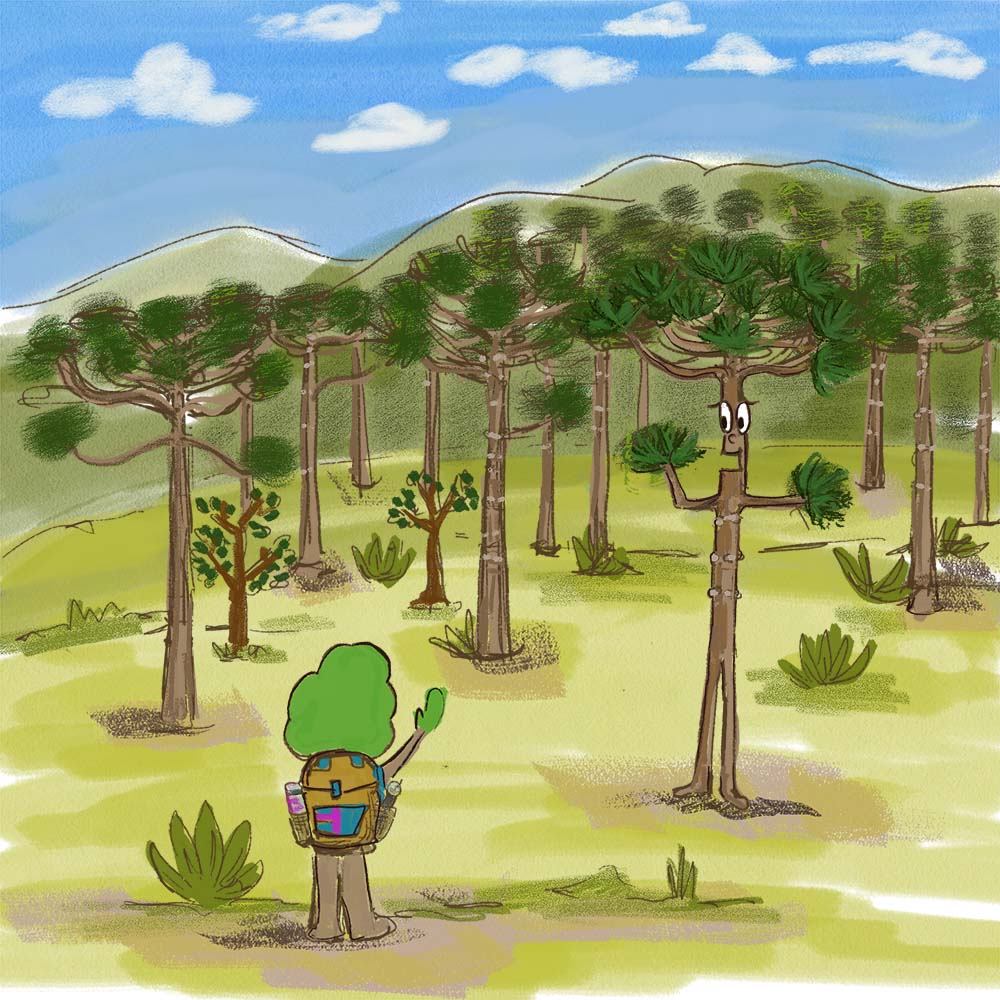
Sofia Ceiba: So my research tells me that araucaria trees have been hanging around Earth for a while.
Cari Araucaria: My ancestors had sauropod dinosaurs eating their leaves, so yes it has been a little while – around 200 million years.
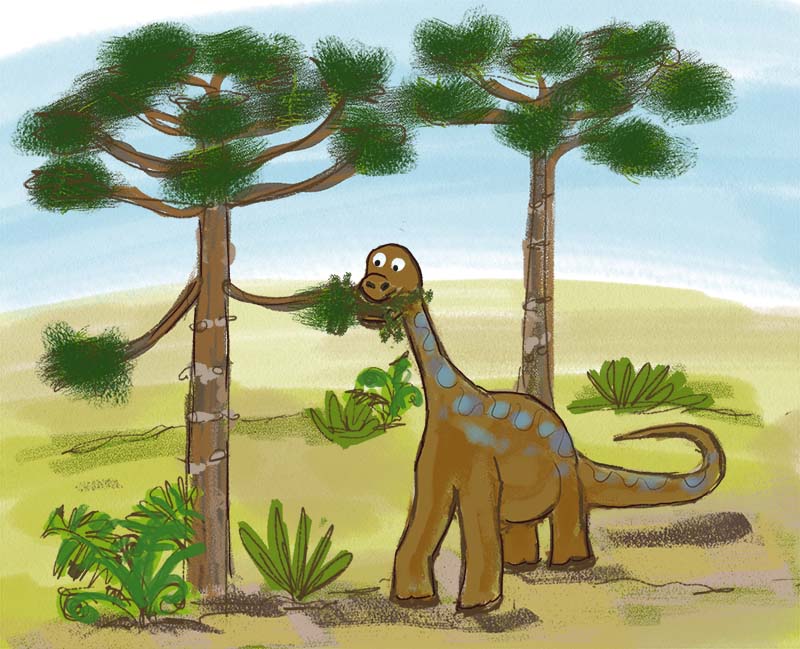
Sofia Ceiba: Wow! Not many organisms around today can say that they had dinosaur snacks in the family tree. Family tree, oops, forgive the pun. Speaking of being a tree, why are you sometimes called a candelabra tree?
Cari Araucaria: It’s those humans again, naming us after something we remind them of. My canopy sticks out of the top of the forest and reminds people of something called a candelabra, whatever that is.
Sofia Ceiba: My producer is telling me that a candelabra is a branched metal or wooden thing that holds candles.
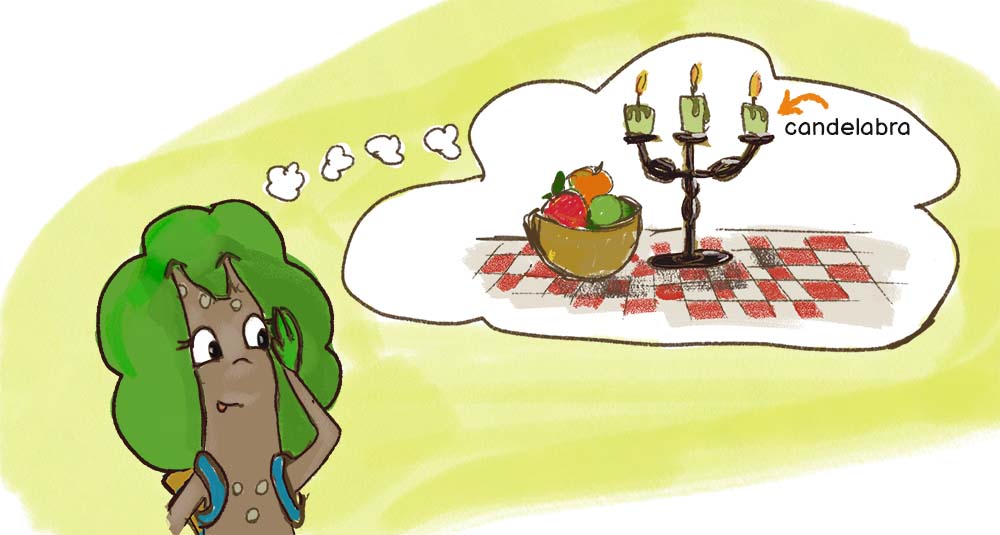
Cari Araucaria: Those humans are causing us araucaria trees some worry.
Sofia Ceiba: Oh no, why is that?
Cari Araucaria: The Atlantic Forest in Brazil is the main place we araucarias grow. Sadly a lot of the forest has been cut down over the years. We’re doing okay in some protected areas, but with the climate changing, we may lose more of our range if it becomes too warm and dry for us to grow. And humans are still cutting down araucaria trees at a fast rate. But we can be okay if people stop logging and protect us to help us grow.

Sofia Ceiba: Well, I hope that some people who tune in will better understand the conservation problems you are facing and help you solve them.
Cari Araucaria: I hope so, Sofia. If humans ever manage to clone dinosaurs, they are going to need something to snack on after all.
Araucarias around the world!
Here is a bit of information Cari shared with us off camera. We thought you might find it interesting:
Sofia Ceiba: Obviously you live in Brazil, but I understand that you have cousins in other parts of the world?
Cari Araucaria: Yes, there are 20 species of us in the genus Araucaria (that’s using the human system for classifying plants). I have cousin species all over South America and across the South Pacific in New Caledonia, New Guinea, and Australia.


